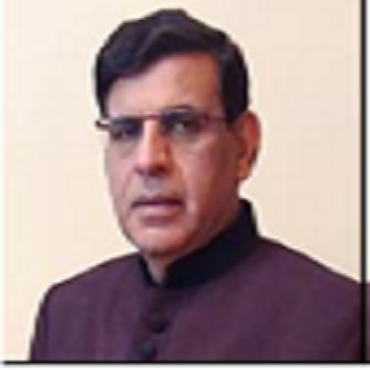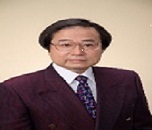
Materials Congress 2018

Theme: Recent Trends in Materials Science and Technology
Material Science Conference which is scheduled during October 22-23, 2018 in Tokyo, Japan addresses key issues that is the spine of technology and innovations impacting our global sciences and technology. Material Congress will contrite to focus on the topic “Innovation and application on the field of material science”. This auspicious conferences will surely provide a key role on study of Electronics, nano materials, Biomaterials, composite material, bio to students, young researcher, Engineers, scientist. This Material will give a innovative and powerful stage specialists, professionals, researchers, distinctive experts and understudies utilized in the field. This worldwide meeting of individuals worldwide Platform to share, exchange and discussion the theoretical and experimental studies and research related to the electronic, electrochemical, ionic, magnetic, optical, and bio sensing properties of solid state materials in bulk, thin film and particular. This event includes the presentation of latest technologies from all over the globe and professional networking with industries, leading working groups and panels.
Session & Tracks:
Session 1: Materials Science and Engineering
Materials science conference provides an international medium for the publication of theoretical and experimental studies related to the load-bearing capacity of Materials as influenced by their basic properties, processing history, microstructure and operating environment. Appropriate submissions to Materials science and engineering should include scientific and/or engineering factors which affect the microstructure - strength relationships of Materials and report the changes to mechanical behavior.
Mining Metallurgy and Materials Science Conference|Materials Physics Conference|Nano Materials Conference| Materials Science Conferences |Congress On Catalytic Materials| Materials Science Conferences|Structural Materials Conference|Computational Materials Conference|Materials Conference|Materials Science Conferences|Nanotechnology Conferences|Structural Science Conference|Materials Congress|Canadian Structural Conference|Engineering Conference|Chemistry Conference|Physics Conference|Computational Materials Conference|Applied Physics Conference|Mathematics Conference|Smart Materials Conference
Session 2: Nanomaterials and Nanotechnology
Nanotechnology is the management of matter on an atomic, molecular, and supramolecular range. The knowledge aspect about nanotechnology is that the properties of many Materials alter when the size scale of their proportions that approaches nanometers. Materials inventors and engineers work to understand that property changes and utilization on the processing and Materials that are manufacture at the nanoscale level. The field of Materials technology shields the discovery, characterization, properties, and use of nanoscale Materials. NanoMaterials research take part in Materials science-based approach to nanotechnology, prompting advances in Materials metrology and synthesis which have been industrialized in support. The 21st century has seen the introduction of applications of nanotechnology in commercial products, although most applications are congested to the bulk use of passive Nano Materials. Examples include titanium dioxide and zinc oxide nanoparticles in sunscreen cosmetics and some of the food products; carbon nanotubes for stain-resistive textiles and cerium oxide as a fuel catalyst.
Mining Metallurgy and Materials Science Conference|Materials Physics Conference|Nano Materials Conference|Materials Science Conferences|Congress On Catalytic Materials|Materials Science Conferences|Structural Materials Conference|Computational Materials Conference|Materials Conference|Materials Science Conferences|Nanotechnology Conferences|Structural Science Conference|Materials Congress|Canadian Structural Conference|Engineering Conference|Chemistry Conference|Physics Conference|Computational Materials Conference|Applied Physics Conference|Mathematics Conference|Smart Materials Conference
Session 3: BioMaterials and Healthcare
BioMaterials are being used for the healthcare applications from ancient times. But subsequent evolution has made them more versatile and has increased their utility. BioMaterials have revolutionized the areas like bioengineering and tissue engineering for the development of novel strategies to combat life threatening diseases. Together with bioMaterials stem cell technology is also being used to improve the existing healthcare facilities. These concepts and technologies are being used for the treatment of different diseases like cardiac failure, fractures, deep skin injuries etc. Introduction of nanoMaterials on the other hand is becoming a big hope for a better and an affordable healthcare. Technological advancements are underway for the development of continuous monitoring and regulating glucose levels by the implantation of sensor chips.
Mining Metallurgy and Materials Science Conference|Materials Physics Conference|Nano Materials Conference|Materials Science Conferences|Congress On Catalytic Materials|Materials Science Conferences|Structural Materials Conference|Computational Materials Conference|Materials Conference|Materials Science Conferences|Nanotechnology Conferences|Structural Science Conference|Materials Congress|Canadian Structural Conference|Engineering Conference|Chemistry Conference|Physics Conference|Computational Materials Conference|Applied Physics Conference|Mathematics Conference|Smart Materials Conference
Session 4: Ceramics and Glass Materials
Ceramics and Glass Materials is a concise and comprehensive guide to the key ceramic and glass Materials used in modern technology. On the structure-property relationships for these important Materials and expands the understanding of their nature by simultaneously discussing the technology of their processing methods. In each case, the resulting understanding of the contemporary applications of the Materials provides insights as to their future roles in twenty first century engineering and technology. Organized to be a practical and comprehensive resource, that is denoted a specific Materials such as: alumina, mullite, sillimanite minerals, aluminates, quartz and silicas, refractory oxides, clays, concrete and cement, lead compounds.
Mining Metallurgy and Materials Science Conference|Materials Physics Conference|Nano Materials Conference|Materials Science Conferences|Congress On Catalytic Materials|Materials Science Conferences|Structural Materials Conference|Computational Materials Conference|Materials Conference|Materials Science Conferences|Nanotechnology Conferences|Structural Science Conference|Materials Congress|Canadian Structural Conference|Engineering Conference|Chemistry Conference|Physics Conference|Computational Materials Conference|Applied Physics Conference|Mathematics Conference|Smart Materials Conference
Session 5: Catalytic Materials:
The morphology of affords a exclusive electrically conductive surface that enhances the reactivity and selectivity of supported metal catalyst Nanoparticles to the maximum. The gnf themselves also function as very active catalysts for a variety of reactions. Grapheme Nano chips (gnc) are a class of Materials that are produced by treatment of platelet Graphene carbon Nanofibers at selected temperature in an inert gas environment. Under these conditions a set of the exposed edge sites undergo a sealing action to form loops, the number of which can be controlled by the choice of chemical pre-treatment and reaction parameters. They can easily be cleaved into sub-units consisting of between two and eight graphene layers. Carbon Nano chips retain some unique stuffs and display outstanding performance as electrodes for energy storage devices (li+batteries) and catalysts for a variety of industrial processes, where they achieve 100% selectivity as in the styrene production, without the need for toxic metals. Materials science conference also focuses on Materials energy, battery technology and photovoltaic energy.
Mining Metallurgy and Materials Science Conference|Materials Physics Conference|Nano Materials Conference|Materials Science Conferences|Congress On Catalytic Materials|Materials Science Conferences|Structural Materials Conference|Computational Materials Conference|Materials Conference|Materials Science Conferences|Nanotechnology Conferences|Structural Science Conference|Materials Congress|Canadian Structural Conference|Engineering Conference|Chemistry Conference|Physics Conference|Computational Materials Conference|Applied Physics Conference|Mathematics Conference|Smart Materials Conference
Session 6: Electrical, Optical, and Magnetic Materials:
Discover the quantum mechanical origins of Materials properties. Explain the origin of electronic bands in semiconductors. Learn the operating principles of solid state devices such as solar cells and leds. Recognize the Materials physics that underlies the optical and magnetic behaviour of Materials. Many magnetic domains fit in a nanoparticle. Explore a wide range of topics in the domains of Materials engineering conference, quantum mechanics, solid state physics that are crucial for any engineer or researcher https://www.meetingsint.com/conferences/materialsresearch who wants to gain a fuller considerate of the underlying modern electronics. The silicon photonics market is anticipated to grow to $497.53 million by 2020, expanding at a CAGR of 27.74% from 2014 to 2020. The silicon carbide semiconductor market is estimated to grow $3182.89 million by 2020, at an expected CAGR of 42.03% from 2014 to 2020.
Mining Metallurgy and Materials Science Conference|Materials Physics Conference|Nano Materials Conference| Materials Science Conferences |Congress On Catalytic Materials| Materials Science Conferences|Structural Materials Conference|Computational Materials Conference|Materials Conference|Materials Science Conferences|Nanotechnology Conferences|Structural Science Conference|Materials Congress|Canadian Structural Conference|Engineering Conference|Chemistry Conference|Physics Conference|Computational Materials Conference|Applied Physics Conference|Mathematics Conference|Smart Materials Conference
Session 7:Advanced Materials
A large summative of our work that emphases on capitals that can motivate helpful biological retorts from the body, such as the stimulation of tissue repair. Tissue manufacturing has the potential to achieve this by uniting Materials design and manufacturing with cell therapy. A world congress on BioMaterials can deliver physical supports for plotted tissues and powerful topographical and chemical signs to guide cells. Biomaterials manufacturing contains synthesis, processing, and description of novel Materials, comprising polymers, proteins, glasses, cements, composites and hybrids. Presenting Nano scale signs such as Nano photography or nanoparticles as therapeutic agents deliver an exciting approach to moderate cell performance. In order to probe the cell-Materials interface, we are establishing new analytical and non-invasive methods such as high resolution electron microscopy and live cell bio-roman micro-spectroscopy. Also developing new synthetic biocompatible polymeric Materials with unparalleled function and penetrating their biological efficiency. With the current progress in biomaterials that can expect a future healthcare which will be economically feasible to all.
Mining Metallurgy and Materials Science Conference|Materials Physics Conference|Nano Materials Conference|Materials Science Conferences|Congress On Catalytic Materials|Materials Science Conferences|Structural Materials Conference|Computational Materials Conference|Materials Conference|Materials Science Conferences|Nanotechnology Conferences|Structural Science Conference|Materials Congress|Canadian Structural Conference|Engineering Conference|Chemistry Conference|Physics Conference|Computational Materials Conference|Applied Physics Conference|Mathematics Conference|Smart Materials Conference
Session 8: Mining, Metallurgy and Materials Sciences
Metallurgy acted as important role in Materials Science. Powder metallurgy includes an extensive variety of ways in which Materials or components are made up of metal powders. They can avoid, or greatly reduce, the need to utilise metal removal processes and can lessen the expenses. Pyro metallurgy incorporates thermal treatment of minerals and metallurgical ores and focuses to achive physical and chemical changes in the Materials to enable recovery of valuable metals. Total information of metallurgy can help us to extract the metal in a more plausible manner and can used to a wider range. Global metallurgy market will develop at a modest 5.4% cagr from 2014 to 2020. This will result in an increase in the market’s valuation from us$6 bn in 2013 to us$8.7 bn by 2020. From this Materials science conference researchers can get new and innovative ideas on Materials research from the expertise.
Mining Metallurgy and Materials Science Conference|Materials Physics Conference|Nano Materials Conference|Materials Science Conferences|Congress On Catalytic Materials|Materials Science Conferences|Structural Materials Conference|Computational Materials Conference|Materials Conference|Materials Science Conferences|Nanotechnology Conferences|Structural Science Conference|Materials Congress|Canadian Structural Conference|Engineering Conference|Chemistry Conference|Physics Conference|Computational Materials Conference|Applied Physics Conference|Mathematics Conference|Smart Materials Conference
Session 9: Materials Science In Construction Engineering
The Materials engineering program applies Materials science to engineer improved construction Materials to build our infrastructure. These Materials traditionally include asphalt concrete, portland cement concrete, steel and fiber reinforced concrete, unbound and chemically bound aggregates, and chemically treated and stabilized soils. Valuable Materials and resources, which in turn has created exciting challenges in understanding how to chemically and mechanically stabilize these Materials for reuse. Current challenges require the application of micromechanics, computer-assisted visualization tools, thermodynamics, kinetics, and an appreciation of construction processes to solve problems. Civil engineers have adapted and applied multidisciplinary principles to solve problems and have used similar approaches to those used in solid rocket propellants, adhesives, metals, and ceramics. One of the biggest boosts for the building Materials sector is the seemingly endless raising of the bar by various national planning departments on “green” building. According a report on forbes.com, which cites a research report from navigant research, the worldwide market for green construction Materials will grow from us$116 billion in 2013 to in excess of us$254 billion by 2020. Europe, with its emphasis on reducing emissions, will probably be the largest regional market, accounting for around 50% of global demand for green building products by 2020.a produced a report, “global green building Materials market 2012–2016,” in which it forecast demand growth globally to be around 17.9% compound annual growth rate.
Mining Metallurgy and Materials Science Conference|Materials Physics Conference|Nano Materials Conference|Materials Science Conferences|Congress On Catalytic Materials|Materials Science Conferences|Structural Materials Conference|Computational Materials Conference|Materials Conference|Materials Science Conferences|Nanotechnology Conferences|Structural Science Conference|Materials Congress|Canadian Structural Conference|Engineering Conference|Chemistry Conference|Physics Conference|Computational Materials Conference|Applied Physics Conference|Mathematics Conference|Smart Materials Conference
Session 10: Polymer Materials Technology
The conductive Materials goods of electro polymerized polymers upon oxidation is on the same scale as that of the metals. Adding more to its advantage is its flexibility and light-weight enlarging its application circle towards digital electronic systems like oleds, opto-electronic devices and photo-chemical resists which can be used in Nanolithography. These polymers have found application as super capacitors, light emitting diode, solar cells, field effect transistor, actuators and bio-sensors. The conducting polymers can be synthesized by electrochemical method, photochemical method, metathesis method, concentrated emulsion method, inclusion method, solid state method, plasma polymerization, pyrolysis method the performance value of the conducting polymers can be improved by incorporating Nanomaterials like CNT in them. Ecological physically cross-linked hydrogel for biomedical applications.
Mining Metallurgy and Materials Science Conference|Materials Physics Conference|Nano Materials Conference| Materials Science Conferences |Congress On Catalytic Materials| Materials Science Conferences|Structural Materials Conference|Computational Materials Conference|Materials Conference|Materials Science Conferences|Nanotechnology Conferences|Structural Science Conference|Materials Congress|Canadian Structural Conference|Engineering Conference|Chemistry Conference|Physics Conference|Computational Materials Conference|Applied Physics Conference|Mathematics Conference|Smart Materials Conference
Market Analysis:
With the extraordinary growth of Technologies in the last decade Material Science Technology has increased a lot. The global Material research market is developing rapidly due to high growth rate of Technology across the world. From the roads to the electronic goods used, everything we see and use is made of materials: cars, airplanes, computers, refrigerators, microwave ovens, athletic equipment of all types and even biomedical devices such as replacement joints and limbs. Polymer designing comprises of numerous parts of petrochemical industry and polymerization. Polymer designing spreads numerous perspectives identified with synthetic building. Plastics are additionally utilized as a part of the produce of Prosthetic gadgets and surgical hardware. Major players in Material Technologies market are extensively focusing on the latest innovations and development of new Digital techniques to counter and extract the Technology.
2018 provides a podium to globalize the research by establishing a dialogue between industries and academic organizations and knowledge transmission from research to industry. The conference will be the leading forum for all recent advancements in Science and Engineering field. It provides a unique platform for networking with peers and learning from speakers who are experts in Material Technology, Mechanical Engineering, Material Physics , Biomaterials, Nanotechnology, Surface Material Technology , Metallurgy and Materials Chemistry.
Market Growth Analysis:
Material science with smart material marketplace is expected to garner $72.63 billion through 2022, registering a CAGR of 14.9% all through the forecast length 2016-2022. Smart substances are adaptive or shrewd Materials that pose intrinsic and extrinsic talents. Those may be altered by means of external stimuli, consisting of moisture, temperature, electromagnetic field, and strain to reap the preferred useful outcomes. Further, these materials are dynamic in nature and reply to their immediate interplay environments with the aid of adapting their traits. Improvements inside the materials technological know-how area resulted within the development of substances for specific programs. Medical material annual growth rate (CAGR) of 4.8% between 2015 and 2020. This report provides: An overview of the global markets for medical Material with detailed coverage of North American markets, and broad-based estimates European Country. The growing demand for smart materials in north America, Asia pacific ,Europe and coupled with its increasing applications in the view generation and rising environmental concerns are expected to reach the smart materials. That numerous reports have been produced in recent years in Asia and world - wide, with the aim of drawing a comprehensive picture and proposing coordinated actions towards the establishment of coherent strategies in the field.
Market Research Report:
Resilience, toughness, optical clarity, and process stability, along with their ability to be processed as thermoplastic materials while behaving like filled vulcanized elastomers, they are used in large number of applications in industrial and commercial Technology.
The global material market was valued at $149 million in 2015, and is expected to reach $1,387 million by 2022, growing at a CAGR of 39.7% during the forecast period. Material mediums are defined as macroscopic composites possessing a man-made, three-dimensional, periodic cellular architecture designed to produce an optimized combination, not available in nature, of two or more responses to a specific excitation. The global market for Aluminum systems and metal powder witnessed a rapid growth in 2013, and is projected to grow at a CAGR of 5.65% and 3.80% from 2015 to 2020, to reach USD 147.13 Billion and USD 4,062.2 Million by 2020 respectively. Around $9.1 billion in 2013, with the high share of around 70% held by North America and Europe together. The global medical coatings market by value is projected to grow at a CAGR of 6.5% all through forecast length. With the advent of a “borderless world”, cities become a more important criteria in prioritizing markets, as opposed to regions, continents, or countries. This report covers the top 2000 cities in over 200 countries.
Global Material Market: With The change statistics are continuously rising, there's growing pressure from all areas – consumers, businesses, and governments – to search for more eco-friendly material Manufacturing techniques. This acts as another opportunity for advanced materials market because of Always advancing technologies that are used for production of advanced materials.
Market Growth of Materials Science in the last and upcoming ten years
The global material market was valued at $149 million in 2015, and is expected to reach $1,387 million by 2022, growing at a CAGR of 39.7% during the forecast period. Material mediums are defined as macroscopic composites possessing a man-made, three-dimensional, periodic cellular architecture designed to produce an optimized combination, not available in nature, of two or more responses to a specific excitation. They show exceptional physical properties such as negative permeability and permittivity. The significance of materials is that they allow engineers to manipulate wave propagation by arranging the unit cells in different ways. For example, though copper is a good conductor and appears bronze in colour, a materials designed out of copper can be engineered to be an insulator and reflect yellow. Major factors that drive the market growth are capital investment from public and private sources and highly skilled researchers for product commercialization. In addition, the unique engineered properties of material mediums are not found in nature, making them inherently valuable. However, inefficient research despite huge investment is expected to restrain the market growth
Market Analysis:
Materials Industry:
The global market for carbon fiber reached $1.8 billion in 2014, and further the market is expected to grow at a five-year CAGR (2015 to 2020) of 11.4%, to reach $3.5 billion in 2020. Carbon fiber reinforced plastic market reached $17.3 billion in 2014, and further the market is expected to grow at a five-year CAGR (2015 to 2020) of 12.3%, to reach $34.2 billion in 2020. The competition in the global carbon fiber and carbon fiber reinforced plastic market is intense within a few large players, such as Toray Toho, Mitsubishi, Hexcel, Formosa, SGL carbon, Cytec, Aksa, Hyosung, Sabic, etc.
Since the 1970s there has been an unprecedented expansion in the number of advanced materials, novel production processes, and devices that have entered many aspects of human life. These advanced materials, which form a basis of the modern high technology, include: Steels and other metallic alloys, Super-alloys, Polymers, Carbon materials, Optical, electronic and magnetic materials, Superconductors, Technical ceramics, Composites, Biomaterials
Many of these have been successfully adapted by the market and are now utilized in a range of industries and the urban living environment. Examples are encountered daily in the areas of communication, consumer goods and transportation.
Major Material Science Association around the Globe:
- The Material Research Society, USA
- American Chemical Society, USA
- American Physical Society, USA
- The Materials Information Society
- Microscopy Society of America, USA
- The Minerals, Metals & Materials Society, USA
- International Society for Optical Engineering, USA
- The American Ceramic Society, USA
- Federation of European Materials Societies, UK
- Institute of Materials, Minerals and Mining, UK
- Society for the Advancement of Material and Process Engineering, USA
Target Audience:
- Materials and Manufacturing Technology Associations and Societies
- Materials and Manufacturing Technology Researchers
- Materials and Manufacturing Technology Students, Scientists
- Directors of chemical companies
- Materials Engineers
- Materials Science Students
- Physicists/Chemists
- Members of different Materials science associations
Top Material Science University Japan:
Top Material Science University In the World:
- Massachusetts Institute of Technology, USA
- Stanford University, USA
- Nanyang Technological University, Singapore
- National University of Singapore, Singapore
- University of Oxford, London
- Tsinghua University, China
- Tohoku University, Japan
- Materials characterization,Nuclear Materials and Emerging Smart Materials
- Materials for energy conversion and storage devices
- Batteries and energy materials
- Polymer Materials Technology
- Materials for Green Technology
- Mechanics and Behavior of Smart Materials
- Materials for Energy Storage and Applications
- Materials Chemistry
- Physics and Chemistry Of Materials
- Materials Science and Engineering and Applied Physics
- Research Report on Metals
- Journal of Materials Science
- Advanced Materials
8 Organizing Committee Members
16 Renowned Speakers
Seiichi OSHITA
University of Tokyo, Japan
Japan
James C. Kennedy
ThREE Consulting
USA
Kuan-Tsae Huang
CEO, AzTrong Inc
Maryland
Dilum De silva
Informatics Institute of Technology
Sri Lanka
Miryala Muralidhar
Shibaura Institute of Technology, Japan
Japan
A.S.Khanna
Indian Institute of Technology, Bombay
India
Vladimir Sobolev
South Dakota School of Mines & Technology
USA
Elias Siores
Bolton University
UK
Hiroaki Matsui
The University of Tokyo
Japan
Konstantin Lyakhov
Jeju National University
South Korea
Brahm Pal Singh
R&D Manager,Panasonic Corporation
Japan
Taro Toyoda
The University of Electro-Communications
Japan
Seiki Chiba
Chiba Science Institute
Japan
Haruo Sugi
Professor
Japan
Tae-Soo Chon
Ecology & Future Research Association,Busan
South Korea
Jameel Sulaiman
Mosul - College Of Dentistry
Iraq












































































































































